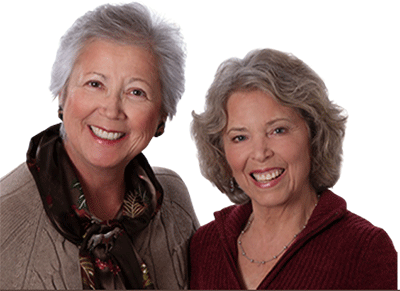Worry is the Work of Motherhood
By Sheryl PaulSeptember 18, 2009
Do you find yourself worrying about your kids' health and well-being? Learn some tips about how to manage the worry.
Janelle, my midwife, sat at the bottom of my bed during my labor with my second son, and said to me, “Worry is the work of motherhood”. She was quoting Pam England from her book, Birthing From Within, in response to me sharing with her that I was worrying about how Everest, my firstborn, would handle having a sibling. I was twelve hours into my labor but hadn’t progressed into the strong contractions that would push my baby into the world. Janelle could sense that something emotionally was holding me back from the internal surrender that needed to occur before my body would open enough to move to the next stage of labor. She moved closer to me and said, “You look so sad.” And that’s when the floodgates opened and I cried about how worried I was about losing my exclusive relationship with Everest, how worried I was about how Everest would respond to his little brother, how worried I was about my ability to love another child the way I loved Everest. Worry is the work of motherhood.
I had come across that sentence when I read Birthing From Within during my first pregnancy, but there was no way for me to metabolize what it meant until I became a mother. When Everest was a baby I worried constantly about him: Was he healthy? Was he happy? Would he get hurt? Was he hungry? Was he in pain? When my husband would take him for a few hours I could barely relax from the worry about their safety. I would have catastrophic visions of car accidents and policemen appearing at my door. I thanked God for the invention of the cell phone and utilized it multiple times during each of their excursions. Worry is the work of motherhood.
As Everest got older, I worried less. He was more stable, less vulnerable, years away from the baby and toddler stages when I would check to make sure he was still breathing at night, every night, usually several times a night. My husband could take him for a day and I usually wouldn’t need a cell phone check in (although I wouldn’t oppose a text message). I developed more trust that he was going to be okay, and that if he wasn’t okay (if he got hurt or sick) I would find the resources to handle it.
But then Asher was born, and the worry started all over again. In the final days of my pregnancy with Everest, my midwife said to me, “You’ll never be as connected to your child as you are right now.” At the time, I agreed with her, but when Everest was on the outside of my body I felt more connected to him with each passing day. The same is true with Asher. The longer he’s here, the more hours I spend gazing into his sweet brown eyes, the more I hear his delicious baby laugh and cuddle his yummy baby body, the more deeply and hopelessly I fall in love with him. The umbilical cord, while physically cut a few hours after birth, only gathers strength as our love for each other grows. There is still very little separation between he and I; his pain is my pain; his joy is my joy. And the loss of him would be the loss of me. Nothing renders a woman more vulnerable than becoming a mother. The fierceness of the love is unparalleled, and with such depth of love comes the risk of loss of equal depth. So I worry. I worry almost all the time. The worry doesn’t usually eclipse the joy of motherhood, but it lives inside me as an undercurrent just behind my brow, just inside the lining of my heart.
So what is the work we must do to manage the worry? For me, it’s four-pronged. The first prong is to accept that worry is part of the deal of parenthood. In Inner Bonding terminology, we talk about accepting and embracing the authentic and existential feelings of grief, helplessness, heartbreak, and loneliness. We don’t usually include worry in this list, but when it comes to parenting, I have to say that it’s nearly impossible to love a child as deeply as we do without worrying about their well-being. Context invites accepts which inspires compassion; when we accept the worry instead of judging or berating ourselves for carrying it, it becomes easier to manage.
The second prong is to accept my powerlessness over the outcome of my childrens’ lives, including their day-to-day health and their long-term emotional well-being. Of course I do everything in my power to make sure they are healthy and safe, but since I can’t put them in a bubble, I have to accept that life will happen. Bee stings will occur, bones will break, illness and fevers will take over, accidents happen. This is a continual lesson in surrendering control, reminding myself every day, usually several times a day, that I cannot control most of what occurs in my kids’ lives. My ego just hates that reality! But my higher self takes solace in that fact because it means that I can only do what I can do and the rest is in God’s hands. As parents – and especially as mothers, I believe – there’s a tremendous amount of pressure to raise our kids “perfectly.” If a kid turns out well, we assume he or she had a great mother. And if the kid struggles through adulthood, we assume his or her parents failed in some way. The truth is that we all “fail” as parents in some way because we’re only human and we can’t possibly raise our kids without error. So part of accepting my powerlessness is letting myself off the hook.
The third, and perhaps most important, prong is to pray. Every night since Everest was born I’ve prayed to God to please keep him safe, to please keep my husband and I safe, to help me be the best mother I can be. When I see Everest climbing up to a high spot on the structure, I pray. When he’s sick, I pray. When I see Asher struggling with the immense discomfort of new teeth trying to pierce through bones and gum, I pray. And when the worry threatens to consume me to the point where it eclipses my joy, I pray. Dear God, please remove my worry. Please help me surrender. Please help me.
The fourth prong is to practice gratitude. Worry is a negative frequency, the mind’s habitual tendency to focus on something bad happening. When Everest was a toddler I was talking to my mom about worrying, and she said that when my brothers and I were young she had to visualize changing the channel on her internal television set so she could focus on something else. I’ve used that image hundreds of times, literally seeing myself turning the knob on a old-fashioned set. On the worry screen, I see Everest falling down the stairs or tumbling off a play structure (horrible images). But when I change the channel, I tune into the gratitude station. And there, projected onto the screen, I see my beautiful, healthy, happy sons. I see their shining faces and big smiles. I see Everest running across our green grass, laughing his head off as he tries to avoid the sprinklers. I see Asher, safely tucked into the sling, watching his big brother like he’s watching a hero, a big, toothless grin spreading across his face, brighter than the sun. Sometimes I see them as young men, standing with their arms around each other, leaning against our low farm fence, laughing at some inside joke as my husband and I take their picture. Sometimes I see even beyond that, to wedding days and other joyous occasions. And then I come back to right now, this moment, and the sheer joy of watching them as they move the day.
Oh Dear God, thank you for these boys. Thank you for sending these angels into my care. Thank you for the privilege of being their mother. Thank you for each precious day that I spend with them, each moment a memory in the making. I am so blessed. Thank you.
Sheryl Paul, M.A., pioneered the field of bridal counseling in1998. She has since counseled thousands of people worldwide through her private practice, her best-selling books, "The Conscious Bride" and "The Conscious Bride's Wedding Planner," and her website, www.consciousweddings.com. She's regarded as the international expert on the wedding transition and has appeared several times on "The Oprah Winfrey Show", as well as on "Good Morning America" and other top television, radio, and newspapers around the globe. Phone sessions available worldwide. 310 382-0048
 Send this article to a friend
Send this article to a friend  Print this article
Print this article  Bookmarked 3 time(s)
Bookmarked 3 time(s)| Related Articles |
|---|
| Giving Up Worry: Challenging the Wounded Self |
| Mother-Legs:The Birth of a New Self |
| Recovering from a Worry Addiction |
Comments
| Author | Comment | Date |
|---|---|---|
| Join the Inner Bonding Community to add your comment to articles and see the comments of others... | ||

Daily Inspiration
A gift is not a gift unless there are no strings attached, no need to get anything back - no agenda attached. If you expect gratitude, approval, a thank you, or if you have an expectation that the person has to like it, wear it, use it, then it's not a true gift - and it may be a manipulation. Notice your intent when you give a gift - to give or to get.
By Dr. Margaret Paul

 Share with Del.icio.us
Share with Del.icio.us Share with Digg
Share with Digg








